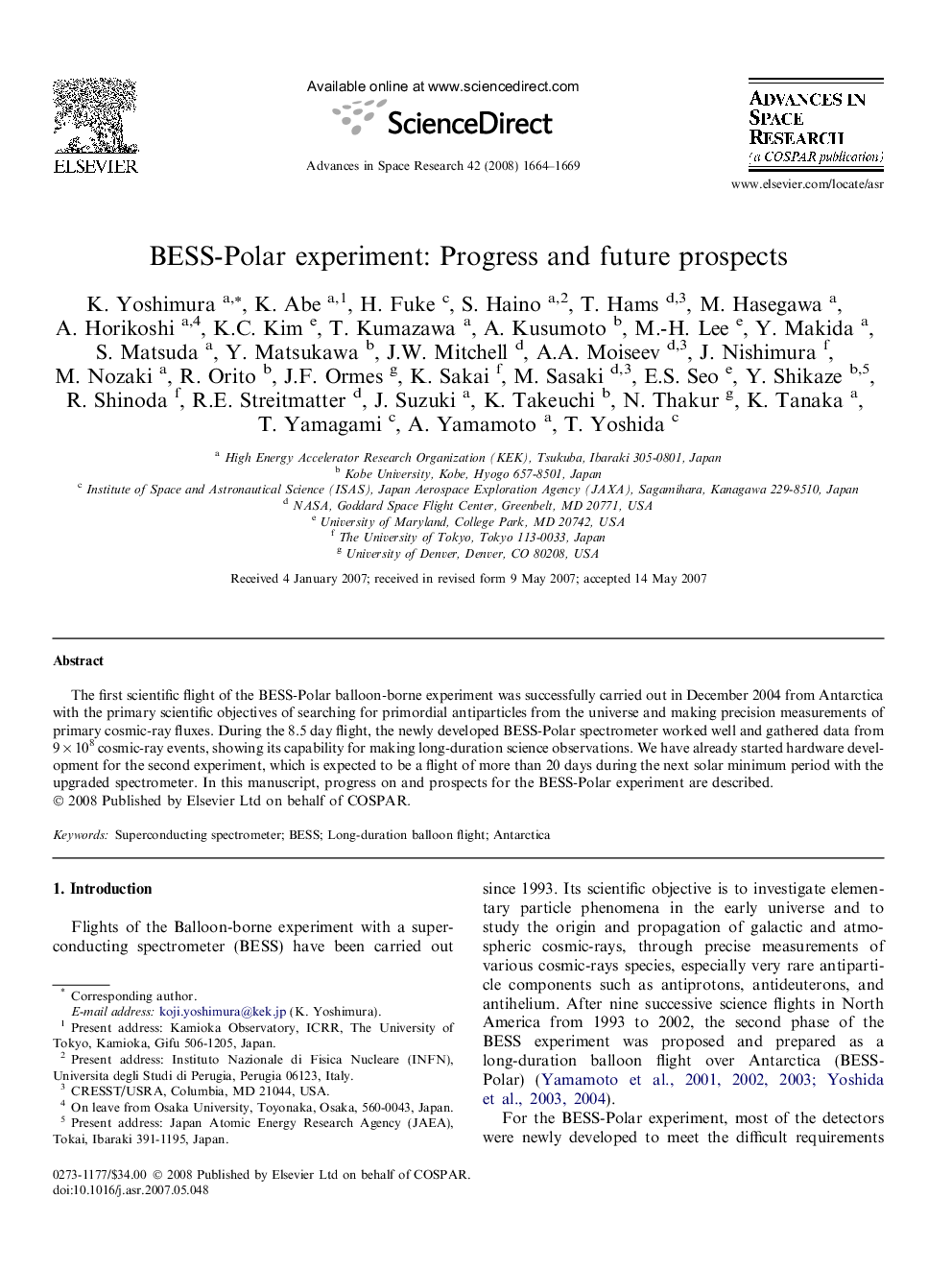| Article ID | Journal | Published Year | Pages | File Type |
|---|---|---|---|---|
| 1765868 | Advances in Space Research | 2008 | 6 Pages |
Abstract
The first scientific flight of the BESS-Polar balloon-borne experiment was successfully carried out in December 2004 from Antarctica with the primary scientific objectives of searching for primordial antiparticles from the universe and making precision measurements of primary cosmic-ray fluxes. During the 8.5 day flight, the newly developed BESS-Polar spectrometer worked well and gathered data from 9Â ÃÂ 108 cosmic-ray events, showing its capability for making long-duration science observations. We have already started hardware development for the second experiment, which is expected to be a flight of more than 20 days during the next solar minimum period with the upgraded spectrometer. In this manuscript, progress on and prospects for the BESS-Polar experiment are described.
Related Topics
Physical Sciences and Engineering
Earth and Planetary Sciences
Space and Planetary Science
Authors
K. Yoshimura, K. Abe, H. Fuke, S. Haino, T. Hams, M. Hasegawa, A. Horikoshi, K.C. Kim, T. Kumazawa, A. Kusumoto, M.-H. Lee, Y. Makida, S. Matsuda, Y. Matsukawa, J.W. Mitchell, A.A. Moiseev, J. Nishimura, M. Nozaki, T. Yoshida,
